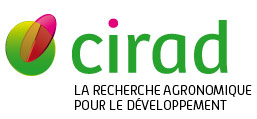The coconut nuclear genome: Progress and prospects for crop improvement
Garavito Guyot A., Yang Y., Yankey E.N., Armero A.A., Rivallan R., Baudouin L., Xiao Y., Bocs S.. 2023. San Diego : PAG, 1 p.. Plant and Animal Genome conference. 32, 2023-01-13/2023-01-18, San Diego (Etats-Unis).
Coconut's deserved title as ãThe tree of lifeã arises from its enormous number of uses and importance as a source of income for millions of farmers. The dynamic market of new coconut derived products and the threats caused by diseases and climate change impose need for the development of new varieties adapted in response to the growing demands. As traditional coconut breeding is cumbersome, genomic tools are needed to speed up the process, and to enter the era of genomic assisted breeding. Recently we published a chromosome length assembly, using a genetic map to anchor sequences to pseudo-chromosomes, and used transcriptomic data for gene annotation and the identification of signaling pathways involved in salt stress response. However, with this assembly only 47 % of the sequences were anchored to chromosomes. Here we present an improved v.2.0 of the assembly based on Hi-C data and the comparison of statistics with v1.0. The assembled heterochromatin, located mostly in the pericentromeric regions where recombination is suppressed. Total size of pseudo-chromosomes increased from 1,020 to 2,057 Mb. Considering only sequences from pseudo-chromosomes, the percentage of complete BUSCO genes (liliopsida_odb10) improved from 75.7 to 87.7 %. We have used this new assembly in the identification of a genomic region from chromosome 8 associated with the survival from Lethal Yellowing (LY) disease, based on a case-control genome wide association approach. In conclusion, the use of this assembly, coupled with intensive phenotyping will allow the identification of other genes of agronomic interest through GWAS, and to consider the characterization of the genomic variations present within the coconut genetic diversity through a pangenome approach.
Documents associûˋs
Communication de congrû´s
Agents Cirad, auteurs de cette publication :
- Guyot Andrea Maria — Bios / UMR AGAP
- Rivallan Ronan — Bios / UMR AGAP
- Sidibûˋ-Bocs Stûˋphanie — Bios / UMR AGAP
